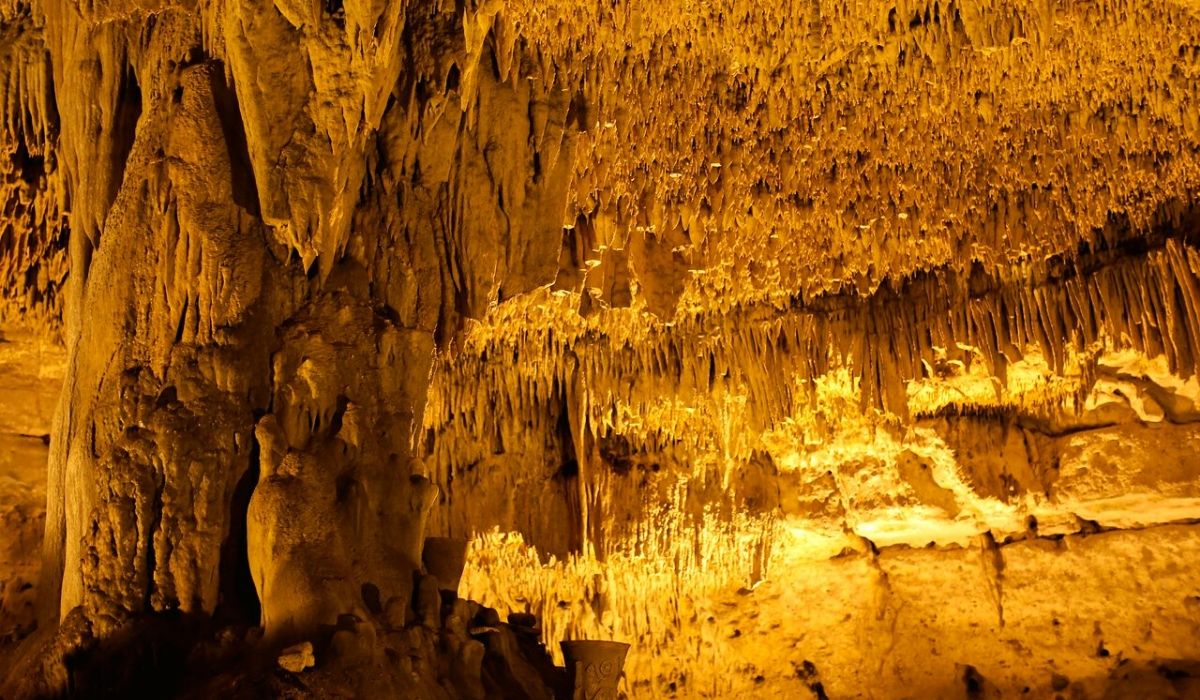We continue to take local adventures off our Bucket List. Yes we live here, but the Bucket List continues to grow! Just when we think we have ticked everything off our list, we hear about another interesting place to check out. And boy did we find a great place this time. Note: This is not a regular blog post, nor are the photos of the quality that we like to maintain. As hard as I tried, it was extremely difficult to capture this underground cave well as lens started to fog up from the humidity and the spaces were so expansive it was a challenge to capture it all.
Balankanche Cave Just a Few Kilometers From Chichen Itza – Worth a Visit
Quick overview – This cave is just 6 kilometers from Chichen Itza just after the Dolores Alba Hotel. It was discovered by local villagers many moons ago but protected from the public as it is a sacred worshipping center for two Mayan Gods – Chaac (the God of Rain) and Tlaloc (the God of Water). In 1959 the cave entrance was found by visitors which prompted an investigation by both American and Mexican archeologists.
Archeologists found drinking vessels, pottery, dishes and remnants of ceremonies in this 700 meter long cave. The cave goes much further than what you see as a visitor, though our guide was not able to tell us how far it reached. As a visitor you will walk 700 meters of a beautiful cave entering through an opening that was originally used by the Maya. The Maya viewed this entry as the ‘gateway into the underworld’ and conducted ceremonies that honor this sacred place.

Glorious Natural Formations Throughout the Cave System
Once you enter the cave with your guide – tours are only conducted with a local guide every hour on the hour – you will walk through a well preserved dry cave. There is a multilingual audio presentation that explains the history of the cave, how it was used by the Maya, and how the cave was formed. Our guide Fransisco lived in the neighboring village of San Fransisco. He speaks English, Maya, Spanish, a bit of Italian and German. WE found his explanation and stories better than the audio tape as he had some first hand local knowledge of the cave system. We walked through five different large cave rooms. The final room is where archeologists found various vessels, plates and ceremonial cups around a large stalagmite that the Mayan see as the tree of life. Archeologists have left the various vessels in the same spot they were found making this area a pretty special and spectacular final room.
700 Meters of a Highly Decorated Cave
Gary and I began our Mexico adventure over 20 years ago as cave explorers and cave divers. We have seen some pretty spectacular caves and caverns throughout the Riviera Maya. Balankanche is another cave that just floors us. The formations, the rooms, the very thought that nature created all of this beauty just continues to floor me each time I see a new cave. We were thankful we did not have to dive this one, though I kept looking at the water filled areas and wished I had my dive gear so I could explore more than my eye could see.
Legends and Interpretations of the Maya
Before we left the cave, Fransisco pointed to a small cluster of stalagmites that were interpreted to look like a group of women and their children.
He pointed to additional formation during our tour that were thought to be a skull, the tree of live, the body of a large god. It was easy to see how the rocks were interpreted as natural sculptures, made by nature, shared by nature and bought into the sacred ceremonies that honored the underworld.
Mayan Plants and Trees Outside of the Cave Entrance
What came as a wonderful surprise once we left the cave, was the documentation land vegetation and trees. Unlike hand written signs we have seen at some outdoor gardens in the area, Balankanche has done a beautiful job of labeling trees and plants around the cave system. Fransisco walked through a portion of the garden with us explaining the indigenous uses of the plants, the different palms, some that I have never seen before, and how the plants interact with each other. I loved this additional tour of the jungle and furthered my knowledge of local trees.
What You Need to Know Before You Go
Balankanche Cave is 6 kms east of Chichen Itza on Hwy 180. Organized tour buses to Chichen Itza do not stop here. This stop is done if you have a rental car, or have a group of friends who hired a driver for the day. If you leave the Riviera Maya early, you can combine Chichen Itza with this tour of Balankanche. We went solely for this tour and combined it with a great lunch and visit to Valladolid.
Cost at the time of writing was 125 pesos per person. This includes the guide as the tours can only be completed with a guide. Tours run each hour on the hour. Preferably six people are needed for a tour. If you are the only ones at the entrance, which is what happened to us, we paid for three people even though there were only two of us. We felt this was fair and a good price. Of course we tipped out guide at the end.
Bring good walking shoes as the inside of the cave is very humid. The tour runs for about 30 minutes, and you can take photos with a flash. Fransisco loves to be engaged, so ask him questions and get a local Maya perspective of this cave system.
